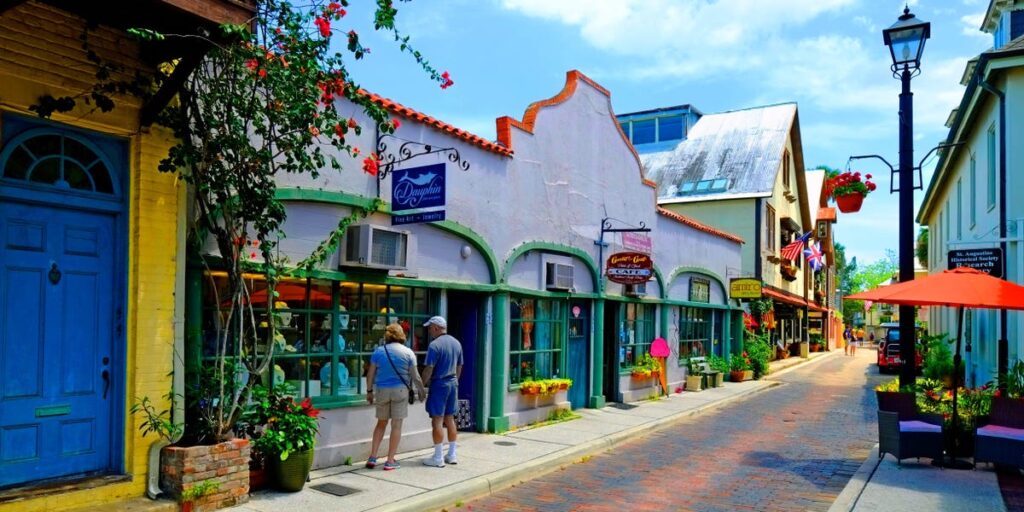- I love traveling to Europe, but the long-haul flights and busy travel seasons can be challenging.
- Instead, I visited St. Augustine, Florida, for a taste of Spain in the United States.
- I loved seeing beautiful architecture and tasting Spanish cuisine without leaving my home state.
Traveling around Spain has been on my bucket list for years, especially as someone who loves wine, food, and beautiful architecture.
I’ve traveled through Barcelona while taking a Mediterranean cruise, but I haven’t been able to see more of the country. Long-haul flights seem especially taxing right now, and I can’t shell out for an international trip on a whim.
Luckily, I live near St. Augustine, Florida — the oldest city in the US. It’s only about an hour away from where I’m from in Jacksonville, so I’ve been there many times. But I’ve never taken the chance to really dive into all its Spanish influences.
Here’s what it was like finding a dupe for a European vacation practically right in my backyard.
I made a point to visit the Villa Zorayda Museum
I’ve passed by the Villa Zorayda Museum many times while exploring St. Augustine, but I’d never ventured inside until this visit.
Amazingly, the museum’s architecture was inspired by the Alhambra Palace in Granada, Spain.
My $16 ticket included an audio tour of each room and some displays, and it took me about an hour to wind through the building.
The audio tour was interesting enough that my mind didn’t wander while listening, but I could still take everything in at my own pace. Plus, I loved that I didn’t have to read hundreds of tiny plaques.
Inside the museum, I saw opulent Moroccan-inspired lamps, plenty of artwork, and a room filled with Egyptian relics.
The Spanish influence is visible all over the city’s architecture
More showcases of Spanish architecture can be found around the city.
One major site is Flagler College’s Ponce de Leon Hall, which was once the Hotel Ponce de Leon. The site is known for its Spanish Renaissance architecture.
A highlight of Spanish Renaissance Revival architecture can also be found across the street from the college at the Lightner Museum.
In addition to rotating art exhibitions, the museum hosts yoga in the gardens and complimentary guided tours of the historic pools that were once inside the building.
I had my fill of delicious food at a small bakery
While walking down the iconic St. George Street, I got a whiff of freshly baked bread and followed my nose to the Spanish Bakery & Café.
The bakery is known for its empanadas, sandwiches, and picadillos.
I opted for a chicken empanada. The savory filling was wrapped in a flaky pie-crust-style dough and came with a choice of one side.
Because it was hot the day I was there, I chose the chilled tortellini pasta salad, which ended up being a great accompaniment.
For a Spanish-inspired drink, I went straight to Columbia Restaurant
When I want a glass of sangria, I immediately think of Columbia Restaurant. The Flordia chain has been around since 1905, and there’s a St. Augustine location on St. George Street in the Historic District.
The sangria here is available by the glass or pitcher. I shared a pitcher of white sangria with two other people, and it was loaded with fresh citrus and a splash of Torres 10 brandy.
The wine — a Viña Sol white blend — was even from the Penedès region of Spain, so it felt very authentic.
I ended my day at the Castillo de San Marcos for a bit of history
The Castillo de San Marcos — the oldest masonry fort in the continental US — is between the historic part of the city and the waterway.
The Spanish originally built it in 1695, and today, people can tour the fortress. I paid the $15 entrance fee and experienced living history exhibits and plenty of educational displays inside the fort.
I was there during the week, but on weekends, there are even musket and cannon demonstrations throughout the morning and afternoons.
But my favorite part is the big green spot outside the gates. It’s a great area for picnics before exploring the area or just to hang out and enjoy a nice day.
This story was originally published on June 4, 2024, and most recently updated on November 4, 2024.
Read the full article here


